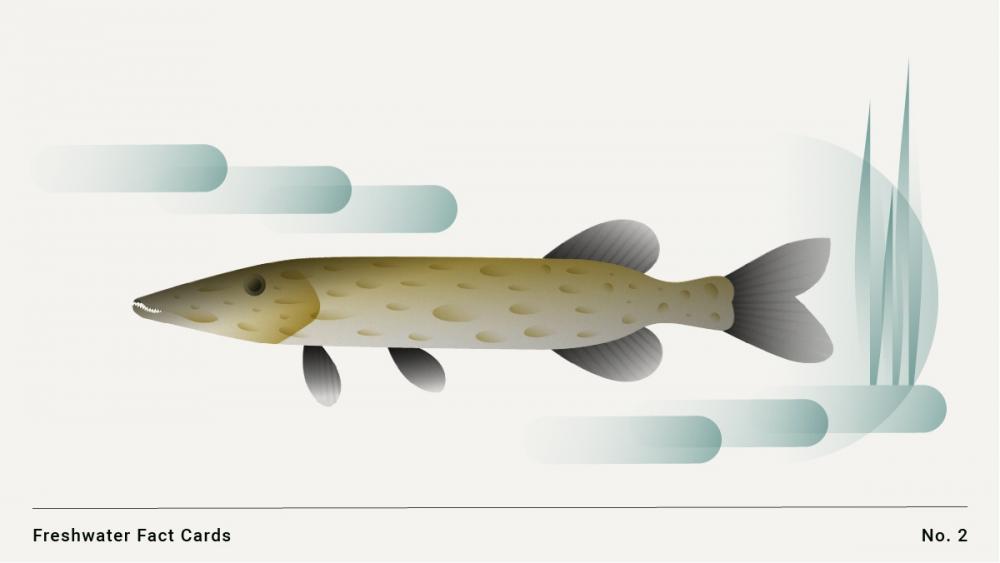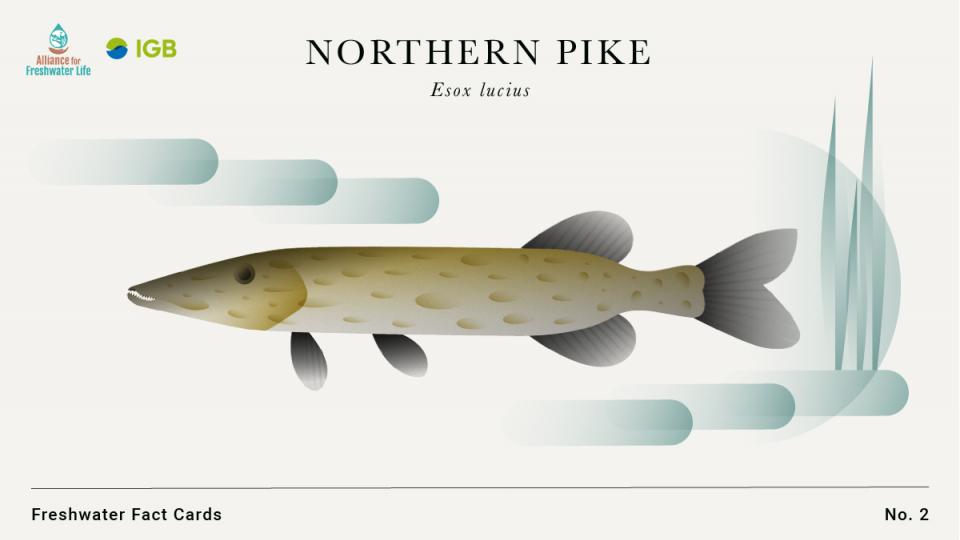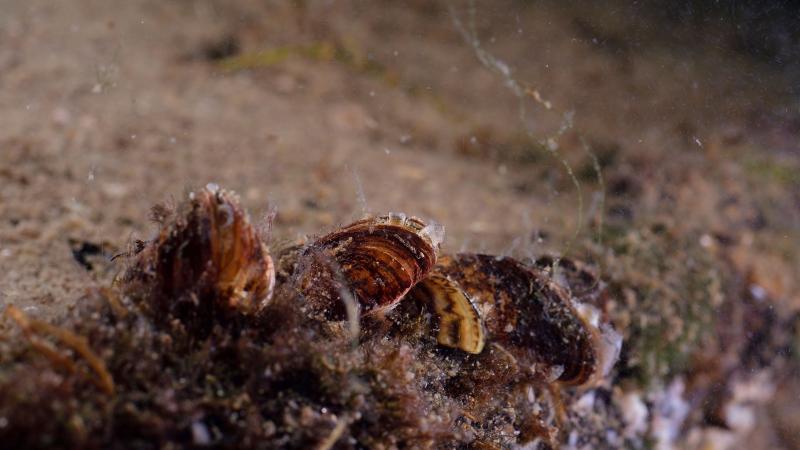
- It is an ambush predator and well camouflaged in the aquatic vegetation.
- Aquatic plants (macrophytes) are important to northern pike, providing shelter for juveniles and camouflage.
- Their snouts are filled with long, sharp teeth.
- Pikes forage intensively over winter, while developing gonads.
- They are coolwater (mesothermal) fish and stop feeding when temperatures are too high.
- “Alarm” pheromones released by prey fish when they are captured are still present in the pike's feces. Prey species that can detect these pheromones avoid the area a pike defecates in.
- It inhabits lakes, rivers and brackish waters. While it can use brackish water as feeding ground, the northern pike migrates to freshwaters to spawn.
- Intensive size-selecting fishing can lead to the development of small, inactive and shy fish.
- Muskellunge (Esox masquinongy) and northern pike have been known to hybridise. Their offspring are commonly called tiger muski. Males are sterile but females can be fertile.

It can grow to over 140 cm in length. It mainly feeds on fish including its own species (cannibalism). Individuals have different personality types. It is an important fisheries target species.

It is an ambush predator and well camouflaged in the aquatic vegetation. Aquatic plants (macrophytes) are important to northern pike, providing shelter for juveniles and camouflage. It inhabits lakes, rivers and brackish waters. While it can use brackish water as feeding ground, the northern pike migrates to freshwaters to spawn.






